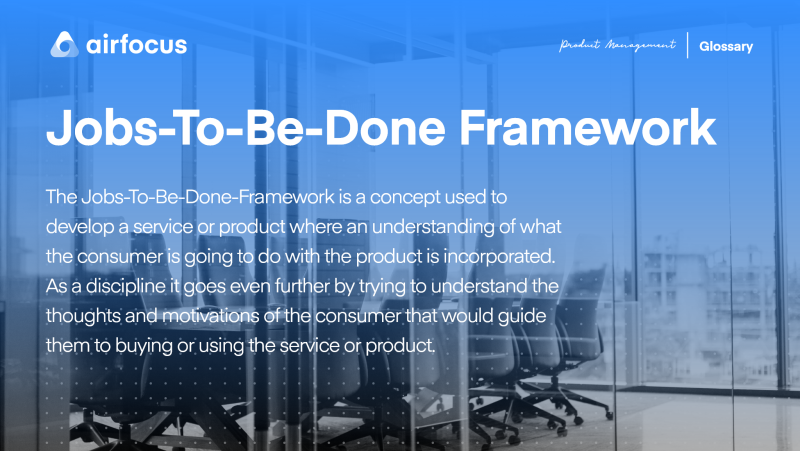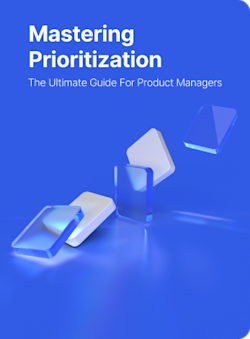Jobs-To-Be-Done-Framework
What is the Jobs-To-Be-Done-Framework?
Definition of the Jobs-To-Be-Done-Framework
The Jobs-To-Be-Done-Framework is a concept used to develop a service or product where an understanding of what the consumer is going to do with the product is incorporated. As a discipline, it goes even further by trying to understand the thoughts and motivations of the consumer that would guide them to buying or using the service or product. In a sense, the framework can be considered to be part of the Behavioral Product Management approach. This is where there is a wider aim to assimilate researched consumer behavior into the development of the product, and also use established and preexisting psychology to influence the consumer’s behavior.
The framework was originally devised by Tony Ulwick of Stategyn and started out as part of a process called Outcome-Driven Innovation. This itself is a framework that attempts to predict outcomes consumers seek out rather than products or services they desire. In Ulwick’s book called Jobs To Be Done, he states his theory has provided remarkable success for his clients in improving their products.
The framework ultimately operates on the premise that people use any product or service because they want to complete some task or attain a specific condition or state. Effectively understanding this can only serve to enhance the product in development.
What Does the Framework Achieve For Product Management?
The framework directs the development of the product towards the customer as opposed to focusing on the product itself. From here it then investigates the psychological rationale the consumer will use to make decisions concerning the product and how they will engage with it. A simple example of how the framework would analyze consumer thinking can start with the thought “I need a kettle.” Using the framework would first lead the development team to deduce that the consumer wants to boil water. From here, further deduction follows that the consumer harbors the ultimate goal of wanting to make tea.
Essentially, the framework can be used in two main ways in Product Management. The first is it can help the Product Manager and development team to garner a comprehensive understanding of the marketplace. Secondly, the resulting product will make for a highly satisfying experience for the consumer.
Deeper Thinking Provoked by Using the Framework
By thinking more deductively when using the framework, some deeper issues should be considered, such as:
Consumer experiences How do consumers feel when they experience problems (that the product could ultimately solve)?
When At what times of the day, week, or month, do consumers experience problems (that the product could ultimately solve)?
Alternatives What other alternatives are in existence that the consumer has access to that can solve their problems?
Improvement How can the product being developed by the business improve on any alternatives that are already in the marketplace?
Opportunity What commercial opportunity is there in the marketplace? This particular issue should automatically emerge from addressing the other, above issues. In combination, by understanding the deeper meaning of what consumers are trying to achieve, when they are trying to achieve them, learning what alternatives they can turn to, and assessing how those alternatives can be improved upon, the opportunity within the marketplace should become much clearer.
Advantages and Disadvantages of the Framework
An obvious advantage of using the Jobs-to-be-done-framework to develop a product is it enables the Product Manager and development team to understand what the consumer actually wants. What this really translates into is a business can focus on solving problems that the consumer has rather than building features that ultimately have no demand.
Asking the consumer what they want from a product is a logical and tried-and-trusted way in which to harvest data on how to develop the product. However, this method assumes that consumers know what they want and are able to competently communicate it back to the business. This is not necessarily the case.
The framework enables the development team and the Product Manager to make inferences beyond direct consumer feedback. It might arise that a consumer’s needs can only be met by a potential product that has yet to be created.
The Jobs-to-be-done-framework helps to fill this gap and interpret consumer needs beyond their basic needs or wants.
A possible drawback of using the framework is that it can lead to the development of the product into the abstract or philosophical.
A consumer that ultimately wants to be able to ‘communicate with animals’ is a long distance from one who simply ‘wants their cat to be able to use the litter tray’ for example.
This kind of abstract interpretation of consumer data can give rise to problems with things like feature prioritization or identifying strategic objectives.
As the framework’s objective is to identify the far-reaching and broader desire of the consumer, it is possible it can distract from immediate design concerns such as how easy the product is to use, or perhaps how it looks.
Using the kettle example above, a development team may focus on the need to make tea in particular, and fail to see they have designed an ugly device or one that is not satisfying or comfortable to use.
Other Considerations
As the Jobs-To-Be-Done-Framework tends to be consumer-centric, it can sometimes find itself at odds with the overall commercial objectives and strategic aims of the organization.
A Product Manager may sometimes find themselves struggling to effectively manage stakeholders such as senior leadership or financial investors because they have an expectation of what they want to achieve.
This can sometimes clash with attempts to design a product that intensely accommodates or prioritizes the consumer.
When this happens a Product Manager may find themselves having to pitch the benefits of following the framework to a variety of people.
By becoming more consumer-orientated and using the framework, sometimes upstream - as well as downstream - stakeholders need to alter their perception of how the finished product will look in the marketplace. And, sometimes, a transition has to take place in order for that to happen.

General FAQ

Glossary categories
Prioritize with confidence

Experience the new way of doing product management








